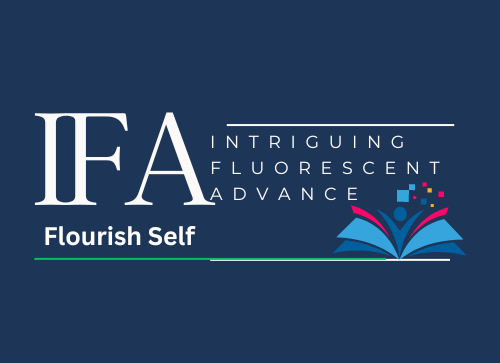
Innovative Teaching Strategies for VARK Learning Styles
Learning styles can vary among individuals, and understanding these variations is essential for educators to effectively engage their students. One popular system that categorizes learning styles is VARK, which stands for Visual, Aural, Reading/Writing, and Kinesthetic. By tailoring their teaching strategies to these different learning styles, educators can create a dynamic and inclusive learning environment.
In this article, we will explore the different VARK learning styles and provide innovative teaching strategies for each one. Whether you have visual learners who thrive on visual aids, aural learners who excel with oral presentations, reading/writing learners who benefit from written materials, or kinesthetic learners who learn best through hands-on activities, we have you covered.
Key Takeaways:
- Understanding the VARK learning styles can help educators develop innovative teaching strategies.
- Visual learners benefit from visual aids such as graphs, charts, and diagrams.
- Aural learners thrive when information is presented orally or through discussions.
- Reading/Writing learners excel with written material and enjoy reading and writing.
- Kinesthetic learners learn best through hands-on activities and real-life experiences.
Understanding the VARK Learning Styles
The VARK learning styles categorize individuals into four different types of learners: Visual, Aural, Reading/Writing, and Kinesthetic. By understanding these learning styles, educators can tailor their teaching methods to effectively engage students and promote better learning outcomes.
Visual learners have a preference for visual aids and learn best through visual images and diagrams. They benefit from seeing information in a visual format, such as graphs, charts, and diagrams. Providing visual aids and incorporating visual elements in teaching materials can greatly enhance their understanding and retention of information.
Aural learners prefer to hear information through lectures, discussions, or music. They excel in environments where information is presented orally. Educators can engage aural learners by providing recorded notes or lectures for them to listen to, encouraging group discussions, and incorporating audio resources like podcasts or YouTube videos. This way, aural learners can process and understand information more effectively.
Reading/Writing learners excel with written material and enjoy reading and writing. They prefer reading textbooks, articles, or written notes and find pleasure in writing essays or taking detailed notes. Educators can cater to these learners by including written materials in their teaching, encouraging them to summarize information in their own words, and providing opportunities for reading and writing activities. Enhancing their reading and writing skills will help them grasp and retain information more efficiently.
Kinesthetic learners learn best through hands-on activities and real-life experiences. They thrive in learning environments where they can engage in physical movement and manipulate objects. Educators can engage kinesthetic learners by incorporating hands-on activities, experiments, and role-playing exercises in their teaching. Providing opportunities for real-life experiences and practical applications of knowledge can greatly enhance the learning experience for these learners.
The VARK learning styles provide valuable insights into how individuals process and retain information. By acknowledging and addressing these different learning styles, educators can create diverse and effective learning environments that cater to the needs of all students.
| Learning Style | Description |
|---|---|
| Visual Learners | Learn best through visual aids and images. |
| Aural Learners | Prefer to hear information through lectures or music. |
| Reading/Writing Learners | Excel with written material and enjoy reading and writing. |
| Kinesthetic Learners | Learn through hands-on activities and real-life experiences. |
Teaching Strategies for Visual Learners
Visual learners have a preference for absorbing information through visual aids. By incorporating visual elements into teaching, educators can effectively engage and enhance the learning experience for these students.
One effective strategy for visual learners is to utilize graphs, diagrams, and charts. These visual aids can help students visualize complex concepts and connect ideas in a meaningful way. Educators can create and present these visuals in the classroom to facilitate better understanding.
Another technique is to encourage students to incorporate doodle diagrams in the margins of their notes. This allows visual learners to visually represent information in a way that is personally meaningful to them. Doodle diagrams can help students make connections, reinforce learning, and aid in memory recall.
Flowcharts can also be a valuable tool for visual learners. These diagrams illustrate a sequence of steps or processes, providing a clear visual representation of how things work or fit together. Using flowcharts in teaching can assist visual learners in comprehending complex information and problem-solving.
Flashcards with visual clues are another effective teaching strategy. By associating images with concepts or terms, visual learners can connect the visual representation with the corresponding information. This technique can improve retention and make studying more engaging for visual learners.
Highlighting key information is a simple yet powerful technique for visual learners. By using bright colors or underlining important points, visual learners can quickly identify and focus on the most crucial information. This visual cue can aid in comprehension and retention of key concepts.
Computer-generated charts and graphics are invaluable resources for visual learners. Software programs, such as PowerPoint, allow educators to create visually appealing presentations with images, charts, and graphs. These visual aids can enhance understanding and make the learning process more engaging for visual learners.
Vocabulary mnemonics can be used to reinforce learning for visual learners. Associating new vocabulary words with vivid and memorable images can help visual learners retain and recall information more effectively.
Visual games like Hangman and timelines can also be incorporated into teaching strategies for visual learners. These interactive activities enable visual learners to engage with the material in a fun and visually stimulating way, facilitating enhanced comprehension and retention.
Overall, by implementing these teaching strategies for visual learners, educators can create a classroom environment that caters to the specific learning needs of visual learners, enhancing their overall learning experience.
Teaching Strategies for Aural Learners Innovative Teaching Strategies for VARK
Aural learners have a strong preference for auditory learning, meaning they excel when information is presented orally. To effectively engage and cater to the needs of aural learners, educators can employ various teaching strategies and techniques that leverage the power of sound and conversation. By incorporating aural aids in teaching, educators can create an immersive auditory experience that enhances learning and retention.
Recorded Notes and Lectures
One effective strategy for aural learners is to provide recorded notes or lectures that they can listen to at their own pace. This allows them to absorb the information through their preferred mode of learning, reinforcing understanding and retention. By revisiting recorded material, aural learners can reinforce their knowledge and gain a deeper understanding of the subject matter.
Reading Aloud
Encouraging aural learners to read their notes aloud can be highly beneficial. This technique helps them internalize the information by hearing and speaking it. By vocalizing the content, aural learners can reinforce their understanding, identify areas of confusion, and engage with the material on a deeper level. Moreover, reading aloud promotes active learning and can facilitate comprehension.
Group Discussions
Group discussions provide a platform for aural learners to engage in conversational learning. By participating in meaningful conversations, aural learners can exchange ideas, clarify concepts, and deepen their understanding through interaction with peers. Group discussions encourage active listening, critical thinking, and the synthesis of information, making it an effective teaching strategy for aural learners.
Singing and Creating Songs
Music can be a powerful tool for engaging aural learners. Encouraging them to create songs or use existing songs related to the subject matter can help them memorize and internalize information. By associating key concepts and facts with catchy tunes, aural learners can enhance their learning experience and make it more enjoyable.
Metaphors and Similes
Utilizing metaphors and similes can be an effective way to engage aural learners. These figurative language devices help in the visualization and understanding of complex concepts by relating them to familiar and relatable scenarios. By using vivid and descriptive comparisons, educators can capture the attention of aural learners and facilitate their comprehension and retention of information.
Utilizing Online Resources
The internet offers a plethora of resources that cater to aural learners. Educators can leverage platforms like YouTube that provide audio lessons, lectures, and podcasts on various subjects. These resources can complement classroom instruction and offer alternative learning materials specifically designed for aural learners. Incorporating online resources into teaching can enhance engagement and understanding for this learning style.
Mnemonic Devices and Acronyms
Mnemonic devices and inventing acronyms can aid aural learners in memorizing and recalling information. By creating memorable associations or acronyms that represent key concepts or facts, aural learners can better retain and retrieve the information when needed. These creative devices serve as mental hooks that facilitate the organization and retrieval of information.
Innovative Teaching Strategies for VARK for Reading/Writing Learners
Reading/Writing learners excel with written material and enjoy reading and writing. To effectively engage these learners, educators can implement various teaching strategies that cater to their specific learning style.
Encourage Active Reading
One effective technique is to encourage reading notes and reflections after class. This helps Reading/Writing learners digest the information and reinforce their understanding. Additionally, using colored pens and highlighters can help them focus on key ideas and concepts in their readings.
Writing Out Key Concepts
Writing out key concepts and explanations is another helpful strategy for Reading/Writing learners. This process of translating information into their own words facilitates comprehension and retention. It also allows them to identify gaps in their understanding and seek clarification if needed.
Utilize PowerPoint Slideshows
Creating PowerPoint slideshows can be an effective way to engage Reading/Writing learners. Presenting information in a visually appealing format, with concise text and visual aids, helps capture their attention and enhances their learning experience.
Comparing Notes with Peers
Encouraging Reading/Writing learners to compare notes with their peers can be beneficial. This collaborative approach promotes discussion and the exchange of ideas, which can deepen their understanding and provide different perspectives on the subject matter.
Utilizing Mnemonics and Organizing Notes
Using mnemonic devices, such as acronyms or word associations, can aid Reading/Writing learners in memorizing and recalling information. Furthermore, organizing notes using headings, bullet points, and subheadings can help them structure their thoughts and make connections between related concepts.
By employing these teaching strategies, educators can effectively cater to the unique learning needs of Reading/Writing learners, promoting engagement, comprehension, and retention of the material.
Teaching Strategies for Kinesthetic Learners
Kinesthetic learners have a unique learning style that involves hands-on activities and real-life experiences. To effectively engage these learners, educators can incorporate various teaching strategies and kinesthetic learning techniques into their lessons.
One effective strategy is to have kinesthetic learners type their notes after class. This approach allows them to physically interact with the material and reinforces their understanding through tactile feedback. Additionally, encouraging kinesthetic learners to create videos or posters related to the lesson topic not only taps into their creative skills but also provides them with an opportunity to apply their learning in a practical way.
Another engaging technique is to have kinesthetic learners review flashcards while in motion. This can be done by incorporating physical movements, such as walking or bouncing a ball, while they study. The combination of movement and repetition can increase their retention and understanding of the material.
Furthermore, educators can enhance the learning experience for kinesthetic learners by providing opportunities for on-site visits and incorporating models or props. These hands-on experiences allow kinesthetic learners to connect abstract concepts with real-world applications, making the learning process more tangible and meaningful for them. Additionally, correlating physical movements with ideas or concepts, such as using gestures or body actions to represent certain concepts, can further enrich the learning experience for kinesthetic learners.
Frequently Asked Questions
What are the VARK learning styles?
The VARK learning styles consist of Visual, Aural, Reading/Writing, and Kinesthetic.
How can understanding the VARK learning styles help educators?
Understanding the VARK learning styles can help educators develop innovative teaching strategies that cater to the diverse needs of students.
What are some teaching strategies for visual learners?
Teaching strategies for visual learners include using visual aids such as graphs, diagrams, and charts, incorporating doodle diagrams and flowcharts, and utilizing flashcards with visual clues.
How can educators engage aural learners?
Educators can engage aural learners by providing recorded notes or lectures for them to listen to, encouraging reading notes aloud, and facilitating group discussions.
What teaching strategies are effective for reading/writing learners?
Teaching strategies for reading/writing learners include encouraging reading notes after class, using colored pens and highlighters to focus on key ideas, and creating PowerPoint slideshows.
What are some teaching strategies for kinesthetic learners?
Teaching strategies for kinesthetic learners include having them type notes after class, creating videos or posters, reviewing flashcards while moving, and incorporating physical movements while studying.

















